All about growing strawberries in pipes
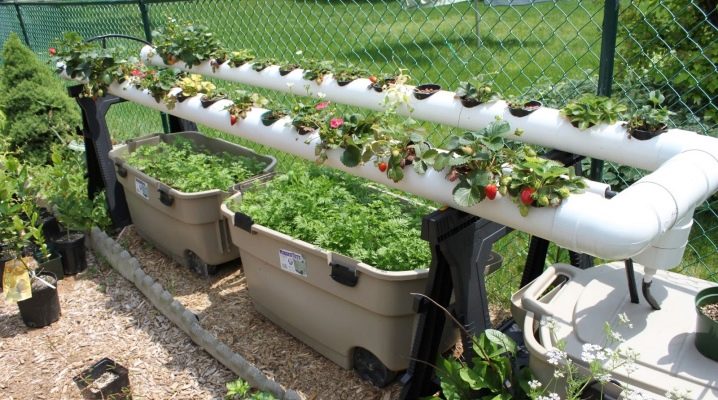
Strawberries in PVC pipes are not a tribute to fancy fashion, strange beds solve many problems. In some ways they are superior to soil plantations, and in some ways they are inferior to them. In the article, we will talk about the pros and cons of this method of growing berries. For those who decide to use it on their site, we will explain in detail how to organize everything correctly.
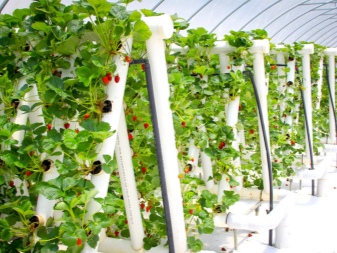
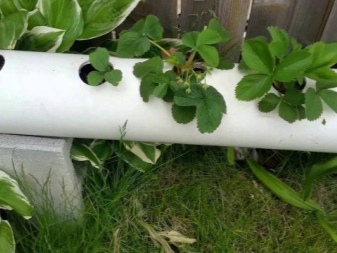
Advantages and disadvantages
Before deciding to install pipes with strawberry beds, you should study all the pros and cons of this method. Let's start with the merits.
- Pipes use up the site space much more economically than a soil bed.
- They are installed in any convenient place, and are not tied to the territory of the garden.
- In addition, due to the mobility and lightness of the containers, the beds can easily change their location. They can be transported indoors, which allows you to harvest all year round.
- For installation, you can use old pipes or their cuttings.
- Strawberries in containers are always clean, even after rain.
- It is convenient to harvest from the structure that goes up, no need to bend over and crouch. Thanks to the same feature, it is easy to care for plants.
- Raised strawberries will not harm poultry and animals.
- The pipe bed does not overgrow, unnecessary sockets can be easily removed.
- Isolating the roots from the soil reduces the risk of plant diseases and insect infestations, slugs.
- You can forget about weeding, the weeds have nowhere to come from, but you still have to loosen the soil.
- The beds in the pipes can be arranged in a decorative way, then they will become an original decoration of the personal plot.
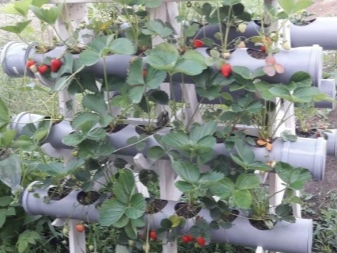

As you can see, there are a lot of advantages in the beds in the pipes, but, in fairness, we should talk about the shortcomings.
- It can take money and time to create a pipe structure.
- The soil requires periodic feeding, as it is quickly depleted.
- The soil becomes alkaline from the presence of expanded clay.
- If the structure is not in a greenhouse, but outdoors, it usually hibernates in a barn. But there are other wintering methods as well.
- Regular watering is required - once every 4–5 days, as the soil in the pipe dries quickly.
If we compare with the advantages, then there are not so many disadvantages of such beds - it will not be difficult to cope with them.
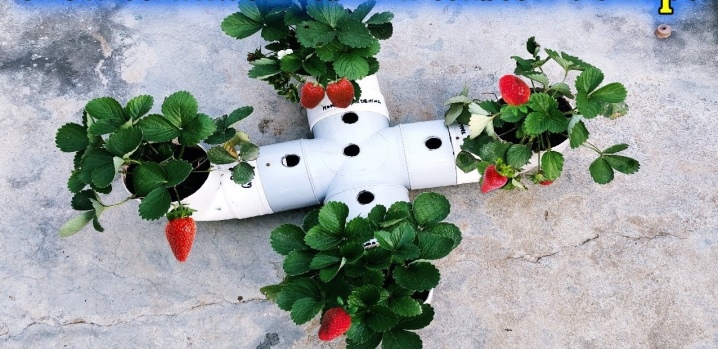
Suitable varieties
To harvest a good harvest, you must initially choose the right strawberry variety. Not every plant is able to develop and bear fruit in a small pipe space. For example, varieties with powerful rhizomes can only grow in soil. Plant species with the following characteristics should be chosen:
- drought tolerance;
- frost resistance;
- year-round fruiting;
- good adaptation to the conditions of this type of container;
- excellent taste;
- beautiful appearance of bushes.
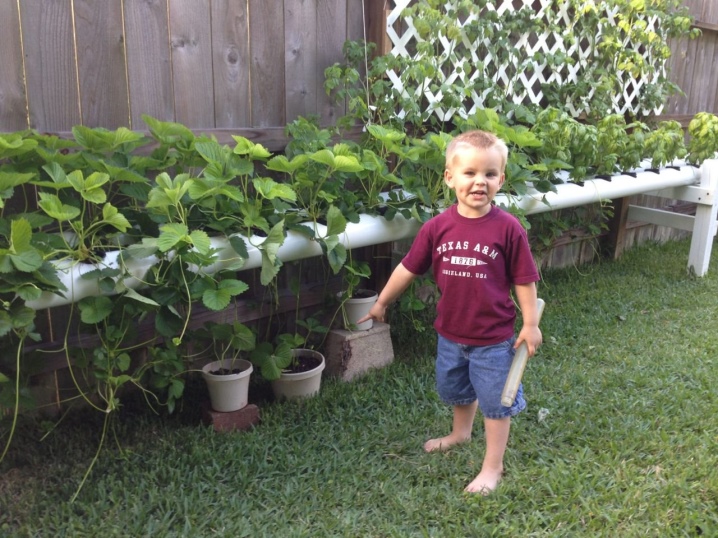
These properties are possessed by the following types of plants, which are ideal for vertical cultivation.
- Ostara. A repaired variety developed in Holland. Miniature bushes delight with surprisingly tasty and large berries. The plant is characterized by high vitality and unpretentiousness.
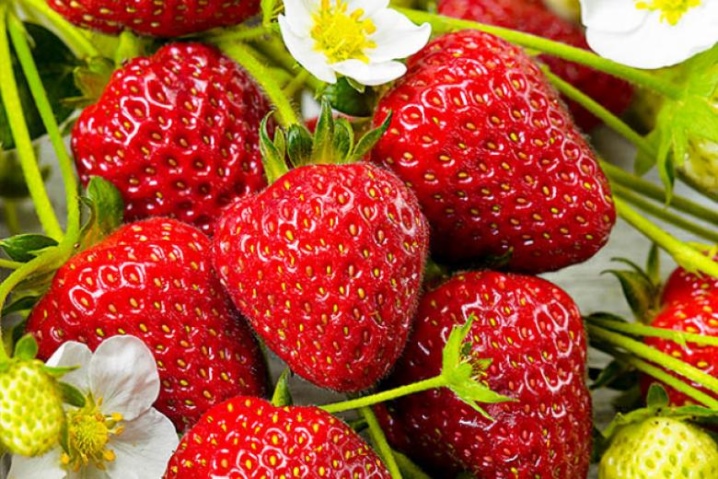
- Alba. An early Italian large-fruited strawberry with a wonderful taste. This is a climbing, frost-resistant, undemanding plant in care. Ideal for tube growing.
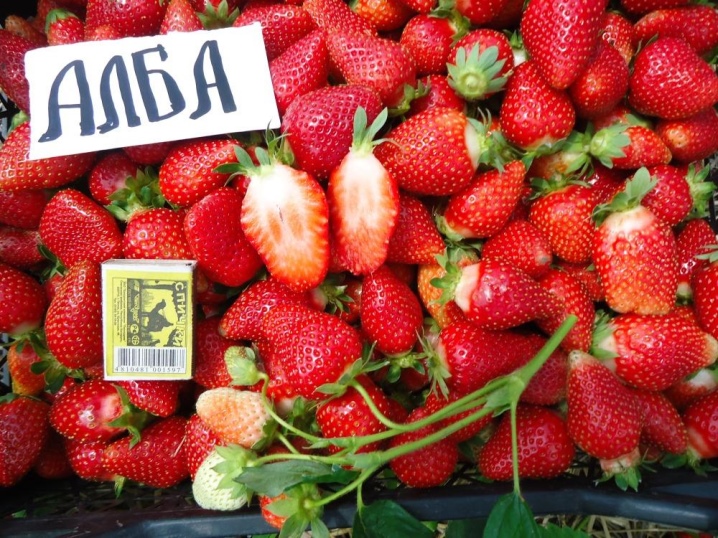
- "Marmalade"... The variety was bred in Italy.The berries are of a moderate size, have a catchy taste, and are perfectly transported. The plant produces many outlets that should be removed in time. They are used for further planting of the species.
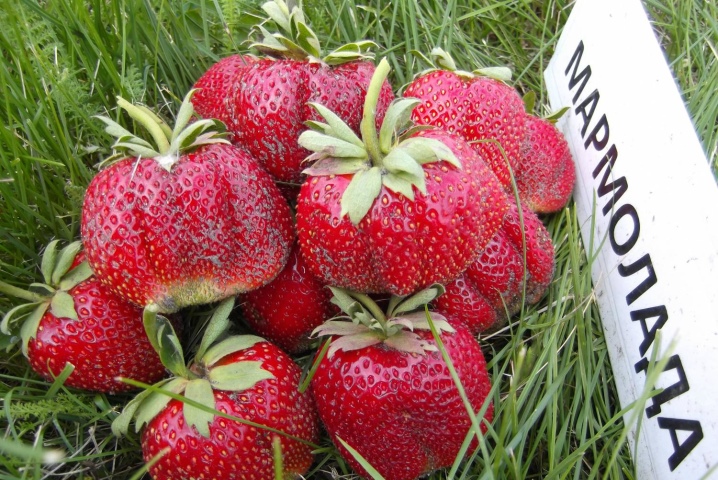
- "Homemade delicacy"... The variety perfectly adapts to any growing conditions. Differs in high productivity. The bushes are frost-resistant, the berries are large, up to 5 cm in diameter, with a wonderful taste.
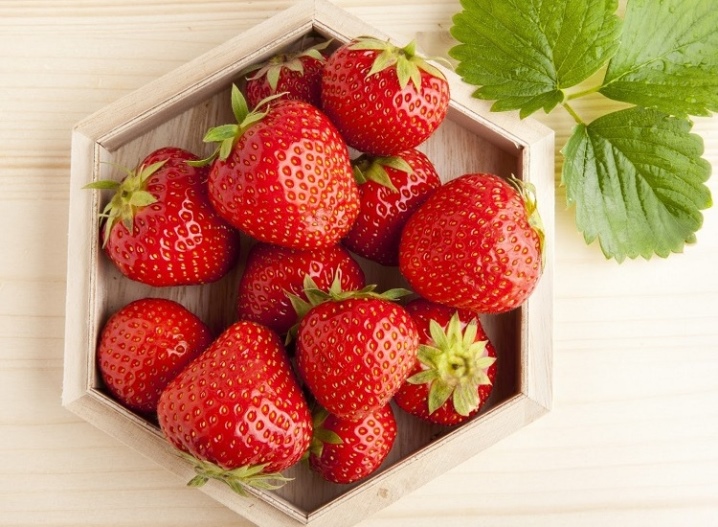
- "Queen". A universal Russian variety with an average ripening period. The berries are juicy, sweet and aromatic, but bear fruit once a year. Strawberries withstand low temperatures. If the frosts in the region do not fall below 10 degrees, the pipes need not be insulated.
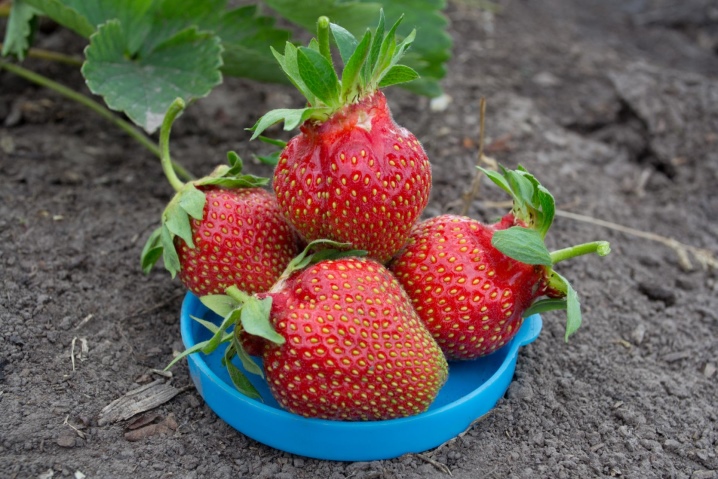
For horizontal cultivation, it is better to choose other varieties.
- "Honey"... One of the earliest varieties, was bred by American breeders in 1979. The berries are very large (up to 30 g), rich dark red, almost burgundy color, with a glossy sheen. Strawberries have a pleasant sweet taste and are well transported.
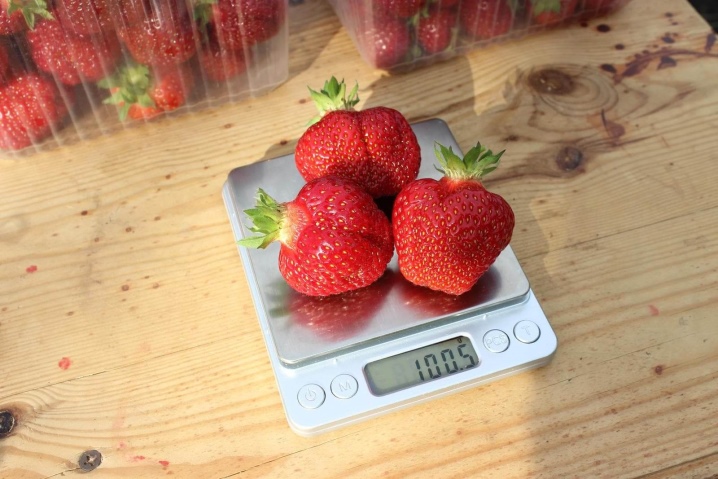
- "Queen Elizabeth". Repaired strawberry, bears fruit from May until frost. Red juicy large berries marked with a wonderful taste. The yield of the variety is high, it looks impressive, it can become a decoration of the site.
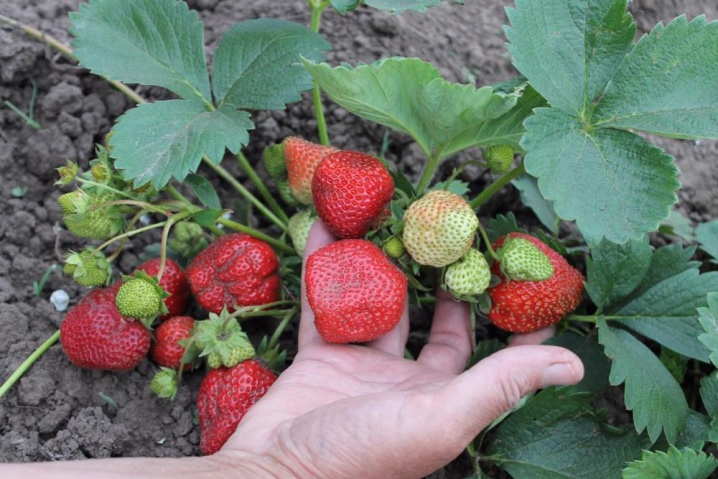
- "Baby elephant". Domestic variety of average ripening period. The bushes are unpretentious, frost-resistant, tolerate an arid environment, weather fluctuations. The berries are large, with an outstanding taste.
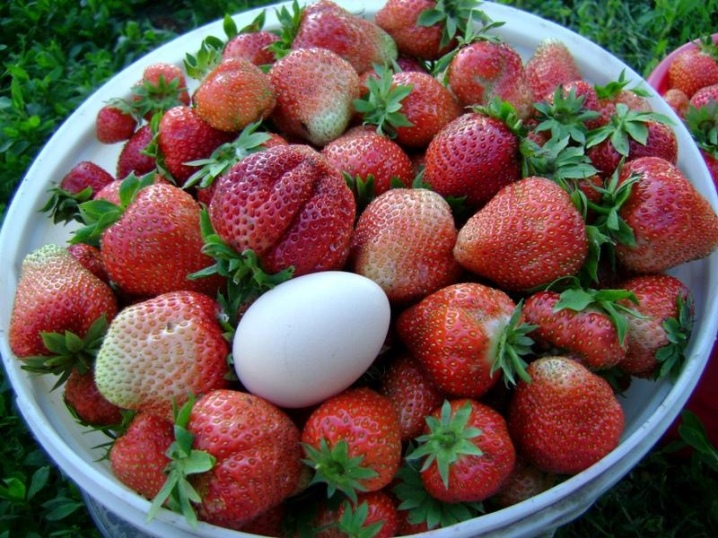
How to make a construction?
Before making a strawberry bed from pipes, you should find a place for it, decide on the size and shape of the structure. The material used is conventional polypropylene sewer pipes.
If the bed will not consist of one pipe, but represent a whole structure, you need to take care of the presence of supports in advance. When making them, it should be remembered that a two-meter plastic pipe from under the sewer, filled with drainage, soil and vegetation, will weigh at least 25 kg.
Multiply this number by the number of beds in the structure - and you will understand the degree of strength of the supporting elements.
Preparing drip pipes for vertical and horizontal planting has a lot in common. First, using the example of one pipe, we will figure out how to prepare it, and then we will talk about the differences between both types of systems.
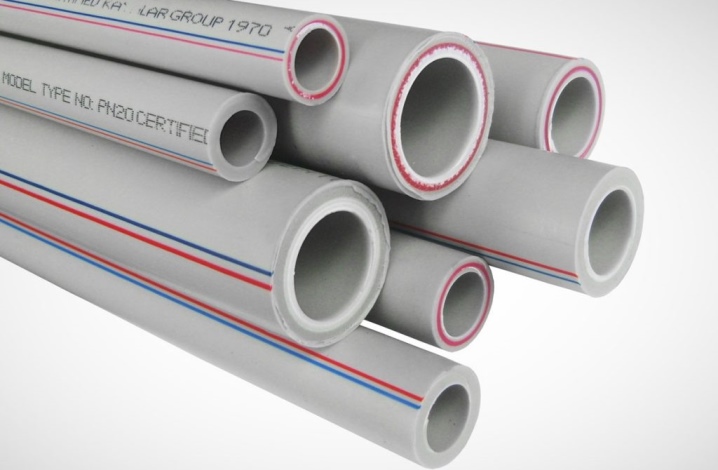
The process of turning the pipe into a bed for strawberries occurs in the following way.
- First of all, they are determined with the length of the pipe, it can be 1-1.5 or 2 m.
- Then in a wide pipe (15–20 cm in diameter) cut holes with a diameter of 10 to 15 cm, using a rotary drill or electric jigsaw. The distance between the incisions should be 15 cm.
- Both ends of the pipe are closed with plugs, having previously cut out small holes in them for the exit of the irrigation tube.
- At the next stage, a thin tube (1.5-2 cm in diameter) is prepared for drip irrigation... Its length should exceed the same parameter of the container for the garden bed by 10 cm. In the irrigation blank, a large number of small holes are drilled with a drill, with the help of which water can flow to the rhizomes of the plants.
- A thin tube is wrapped along its entire length with agrofibre, geotextile or non-synthetic fabric, and then fixed with wire. Thanks to the winding, the holes will not be clogged with soil, the moisture will be uniform.
- Further, drainage is added to the wide pipe, an irrigation pipe is inserted, and the soil is filled up. The processes for delivering drainage and soil into the pipe with vertical and horizontal pipe positions are different (we will talk about them later). A thin tube is inserted into a wide tube in such a way that its ends protrude from the holes made in the plugs.
- An irrigation hose is connected to one of the ends of the thin tube, and a drain hose is fixed on the opposite side to remove excess liquid... Watering can be carried out not only with a pump.Sometimes a container with water is installed above the structure and a tube is brought from it to the drip system of the beds.
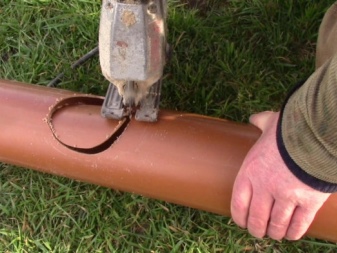
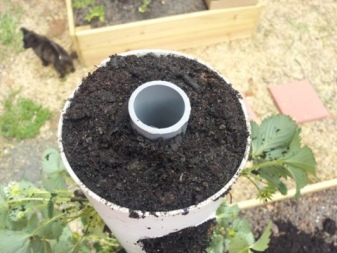
There are slight differences in the preparation of vertical and horizontal beds, they should be taken into account when erecting the selected form of structure.
Vertical
It is reasonable to use the vertical arrangement of the beds on small land plots, where every planting meter matters. But with this placement, the vegetation is more vulnerable to weather conditions. Above construction it is better to build a protective canopy.
Before proceeding with cutting holes in pipes, you should clearly know how the beds will be installed. If the structure is planned to be vertical in a spacious area where access to the berries is free from all sides, the holes can be cut in a circle or staggered.
If the pipes will be exposed near a solid fence or at a slope to it, holes are made only from the access side. The size of the holes themselves can be made smaller than in pipes with horizontal adherence - only 7 or 8 cm in diameter.
Pebbles, stones or expanded clay are used for drainage. In the vertical pipe, drainage is poured into the lower part to a level of 20-25 cm. The soil is laid gradually, with tamping and light watering, so that the soil settles and does not form voids.


Horizontal
Horizontal designs with strawberry beds are more varied than vertical designs. They are laid out in rows on the ground or a frame is built on which pipes are suspended in several tiers, flower beds are placed on an inclined base, or an impromptu slide is created. It all depends on the gardener's imagination.
Horizontal beds are best placed from north to south, so they are less exposed to drying out. The holes in the pipes are made strictly in rows.
Drainage is poured through the holes: gradually, to the bottom of the horizontal pipe, to a level of 1–2 cm. If the irrigation is drip, an irrigation pipe is laid on the drainage, and then the soil is carefully sprinkled, lightly tamping and watering.
If watering is done manually, small holes are made in the lower part of the pipe along the entire length for excess moisture to escape.
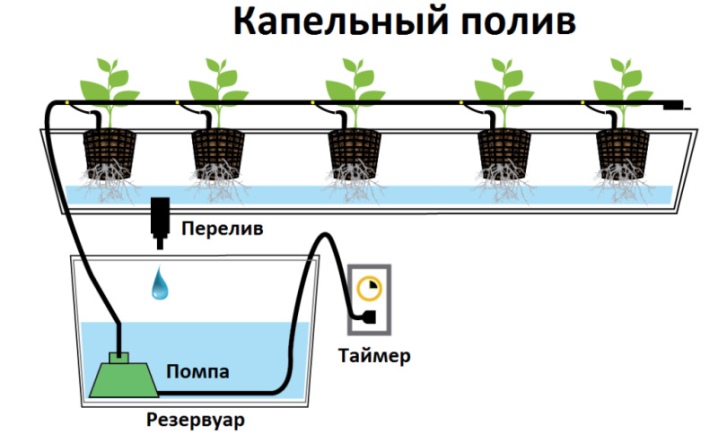
Placing pipes
For planting strawberries, choose a sunny place, otherwise it will not ripen well... But too bright the sun will cause the soil to dry out. The ideal option is to install a canopy over the frame with the beds, which will protect the plants from bad weather and burnout. By the way, strawberries can be planted in pipes not only outdoors, but also in a greenhouse.
A single pipe with beds can be left on the ground or fixed on a fence, barn wall, garage and other outbuildings. If you plan to place a whole complex of beds, their installation will require a strong and reliable frame that can withstand a heavy load.
Those who prefer mobility construct small portable structures of one meter long pipes (only a few tiers). Their weight is significantly less than that of stationary installations.
This makes it possible to move the beds, for example, to the greenhouse with the onset of frost.
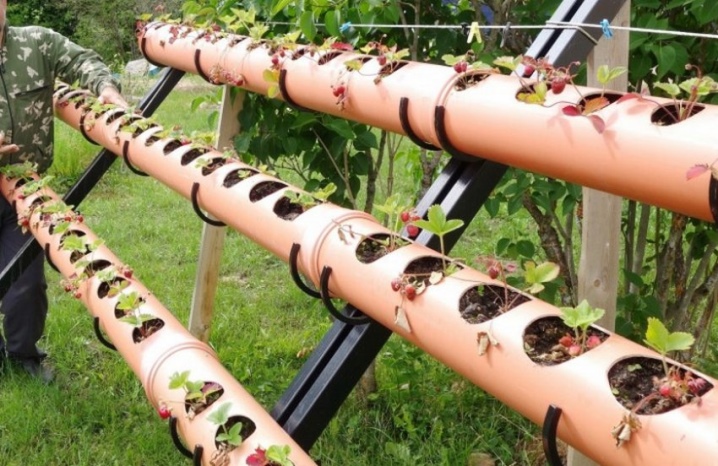
Planting seedlings
Strawberries grown in pipes taste and yield no different from soil plants, you just need to plant correctly and organize good care.
To get a lot of berries, even before planting a crop, you should take care of the soil in which it is to be planted. The bushes need to be grown in lightly acidic soil, and the expanded clay used as drainage leaches the ground. Therefore, before filling it into the pipes, it must be soaked in a weak solution of vinegar for the whole day.
Then you have to work with the soil, choose a composition with the correct acidity. To disinfect the planting soil, it should be doused with boiling water. This will help destroy insect larvae, fungus and all kinds of bacteria. Can be treated with special drugs such as Trichodermine. Peat, organic fertilizers and sand should be added to the disinfected soil.
Before planting, the seedlings must be soaked overnight in a solution of any root growth stimulant, for example, in heteroauxin, and in the morning start planting. During planting, holes are made in the holes of the pipes to a depth of 10 cm, slightly moisten the soil. Then insert the bush into the hole and gently straighten the rhizome. The plant is sprinkled with soil, compacted a little and watered. At first, the seedlings should be protected from the active sun to give them time to take root.
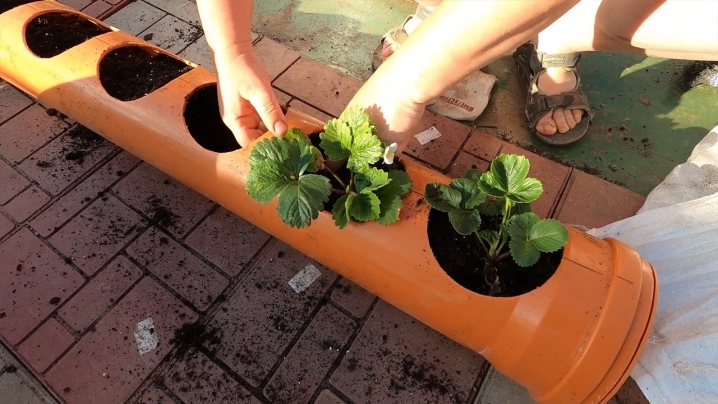
Care
Growing strawberries in pipes has three main problems: rapid drying out of the soil, its depletion and the need to properly store pipes with beds in winter. Therefore, the care is as follows.
- Watering... If drip irrigation is not organized, you should often check the soil and water the plants by hand, avoiding drying out. Excess moisture is also harmful to the roots: they can lead to their decay.
- Top dressing... Plants can be fertilized 2 times a month with humus or complex preparations intended for growing strawberries.
- Treatment... Leaves and bushes are periodically checked and removed at the first sign of damage.
- Wintering... In cold climates, it is better to move the pipes to a utility room and cover them there.
If this is not possible, each pipe should be separately wrapped with two layers of agrofibre, and then the entire structure should be covered with two more layers of covering material. In warm climates, pipes can be laid on the ground, spreading straw or spruce branches, and covered with any insulation on top and hidden under polyethylene.
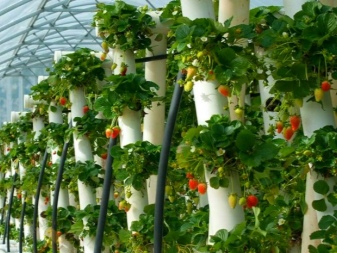
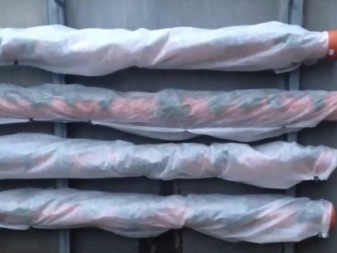













The comment was sent successfully.